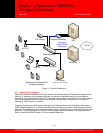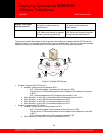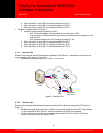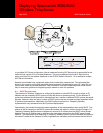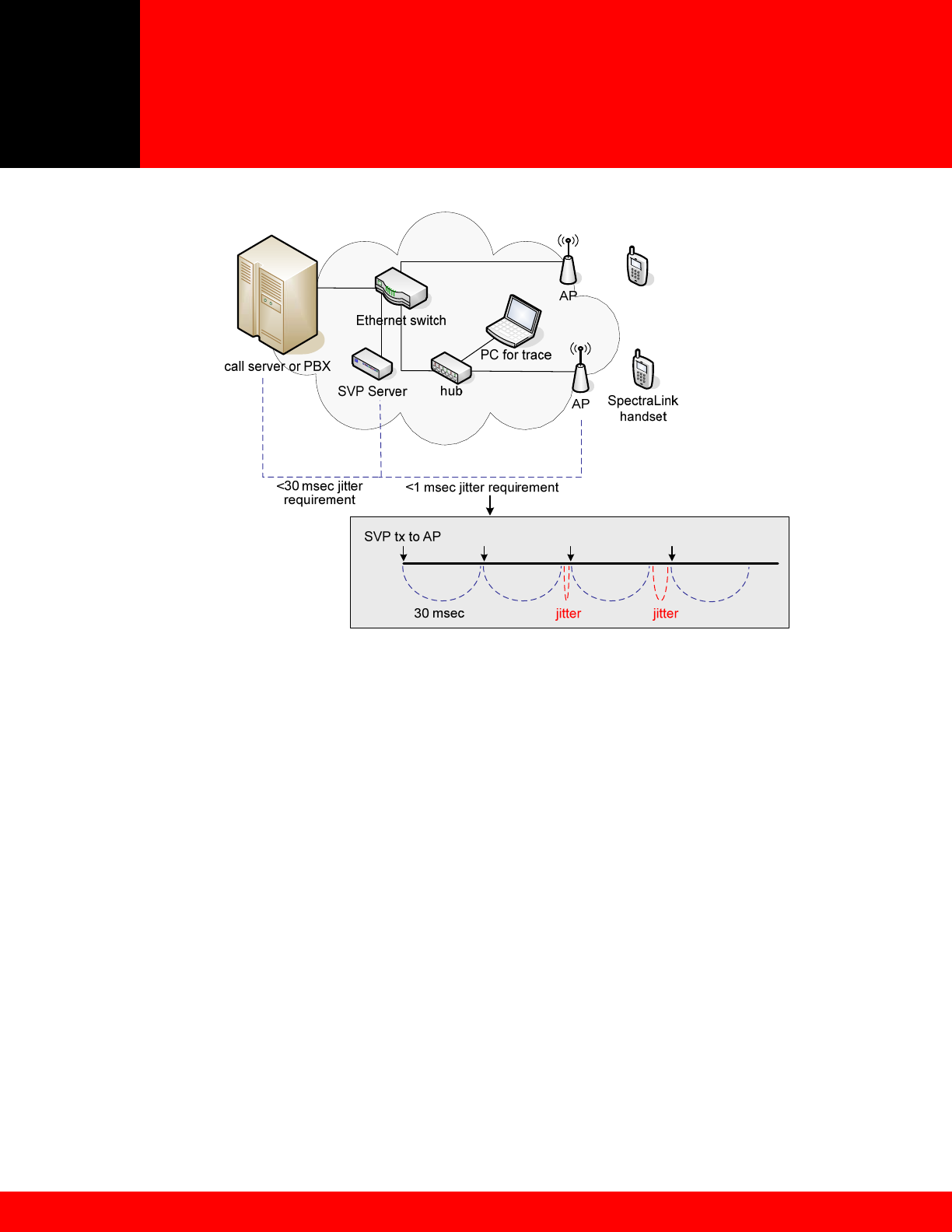
Deploying SpectraLink 8020/8030
Wireless Telephones
May 2009 Best Practices Guide
Figure 9 - Measuring Network Jitter
In a multiple SVP Server configuration, jitter is measured from the SVP Server that is responsible for the
traffic through a given AP to a wireless telephone. This may be different than the SVP Server that is
acting as a proxy for the wireless telephone to the IP PBX. Refer to Section 4.1.3 for additional multiple
SVP Server information.
SpectraLink handsets have a diagnostic option that includes jitter measurement. The calculated jitter
shown in this mode is not the jitter described above because it includes delays in the AP, radio link and
queue times inside the wireless telephone. Jitter information from the handset diagnostic mode should
only be used as a guideline for diagnosing major network or radio link problems.
6.4 DHCP Requirements
The SpectraLink Wireless Telephone is configured by default to utilize DHCP in order to obtain an IP
address and the necessary DHCP options to allow the phone to operate normally. For the different IP
protocols available with the SpectraLink handset there are a number of different DHCP options that would
be used. However, there are also a number of DHCP options that are universal required regardless of the
IP protocol implementation. Additionally, the DHCP options required for a Telephony Gateway
implementation vary somewhat from the IP protocol deployments.
Operationally, the handset functions the same regardless of the implementation when using DHCP. This
means all that is changing is the DHCP options the handset will require in order to function properly. For
Telephony Gateway deployments the handset will acquire its IP address from the DHCP server Scope
Address Pool and its Subnet mask in addition to the most basic options from the DHCP server Scope
Options. The expectation when deploying a Telephony Gateway system is that the handset will reside on
the same IP subnet as the Gateway in order to generate the necessary multicast frames that will allow it
29
©2009 Polycom, Inc. All rights reserved.
Polycom and the Polycom logo are registered trademarks of Polycom, Inc. All other trademarks are the property of Polycom, Inc. or their respective companies.



